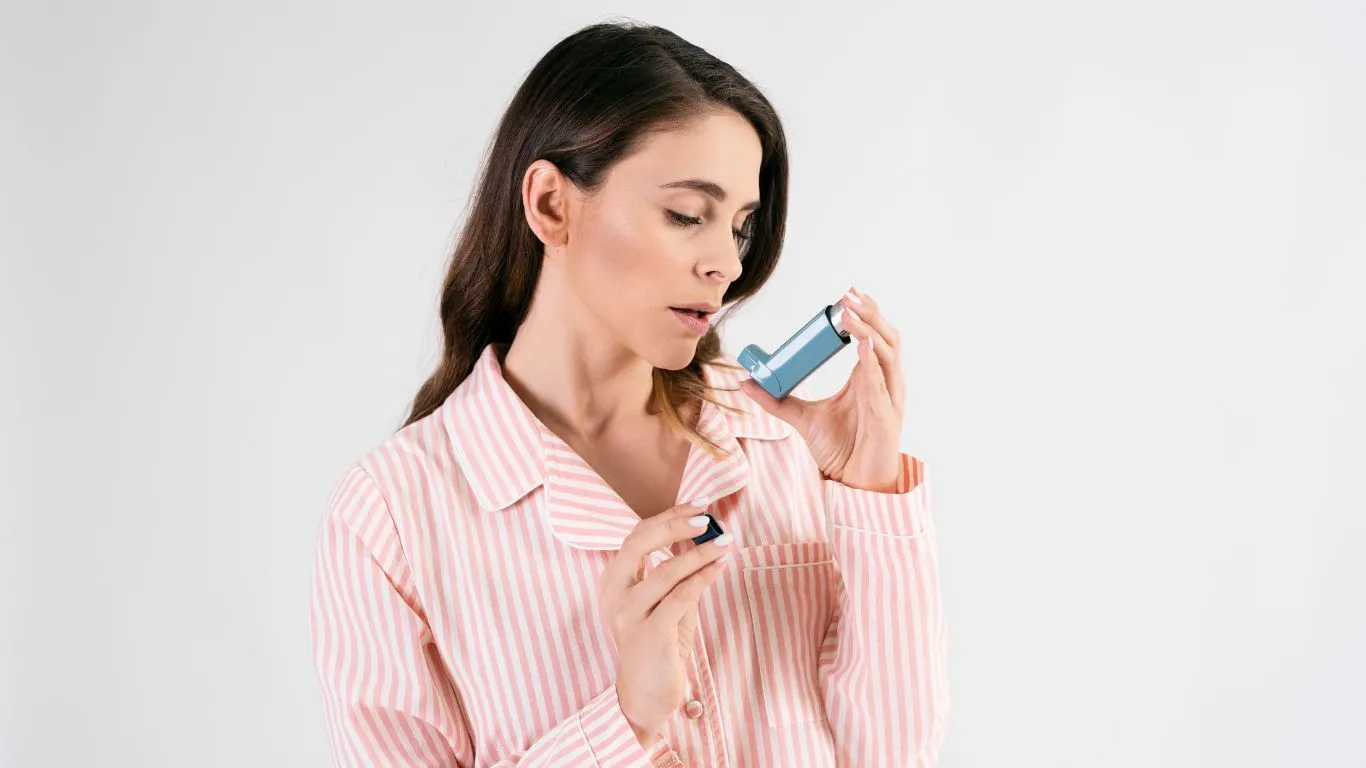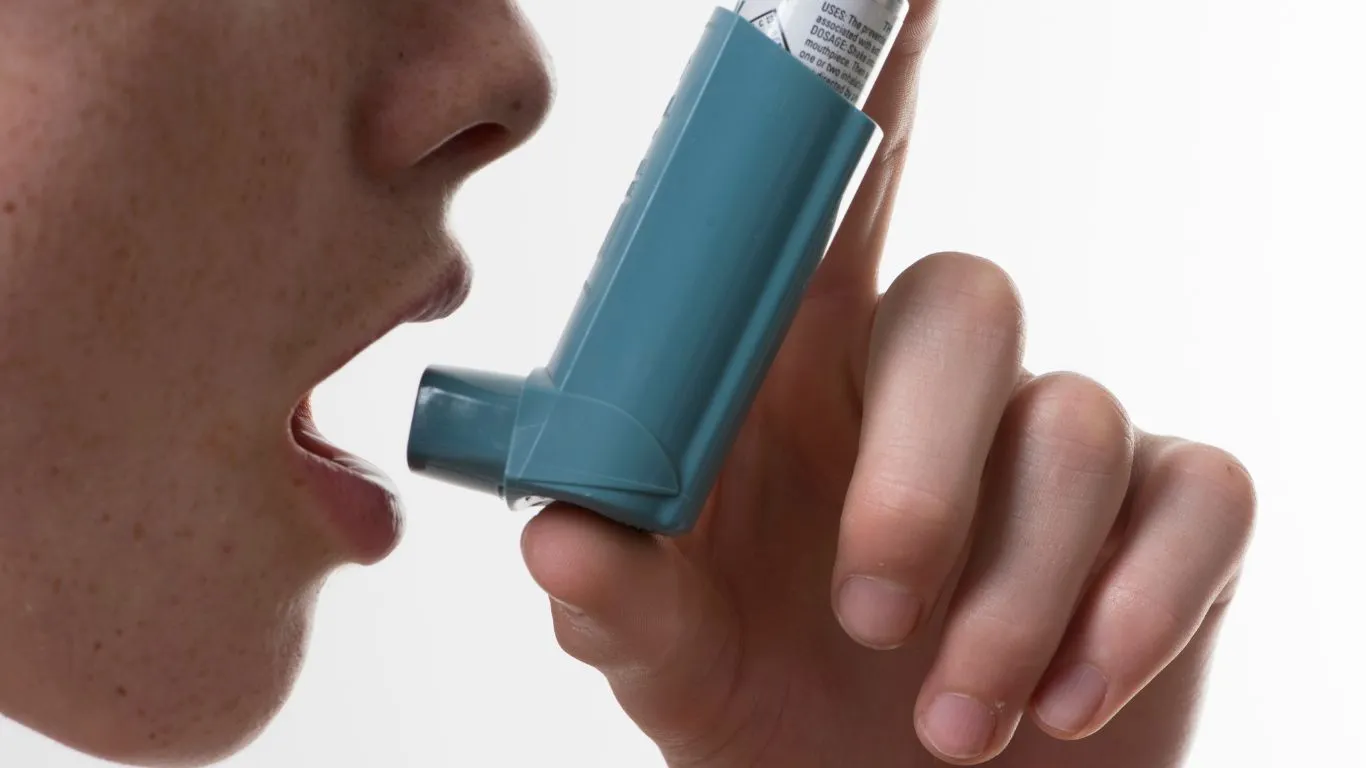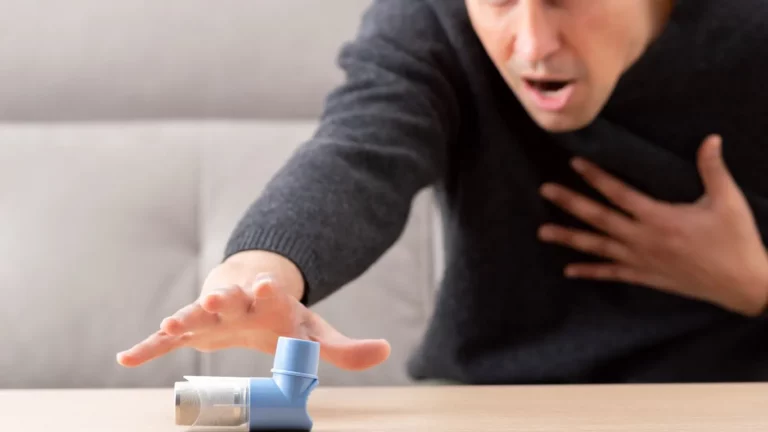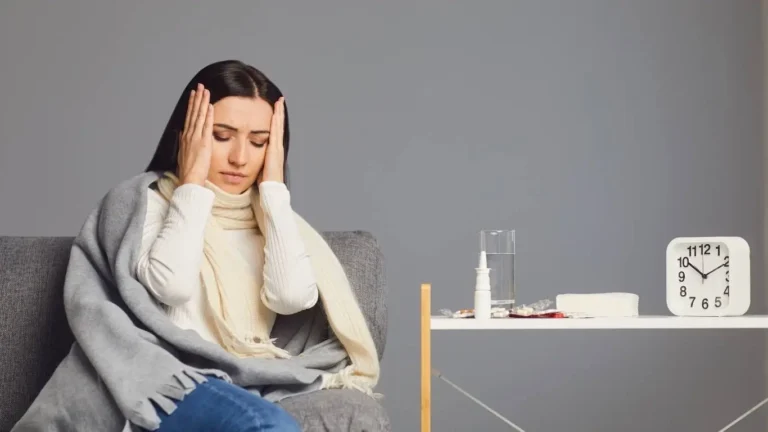Breathe Easy: Managing Asthma Flare-Ups After COVID Recovery
Ever since I recovered from COVID, I noticed something weird—my lungs didn’t bounce back the way I expected. And I wasn’t alone. A few of my patients, and even some nurse friends, started complaining of similar symptoms. Shortness of breath, coughing fits, chest tightness. Turns out, this wasn’t just lingering COVID stuff—it was something more. That’s when I started paying closer attention to what I now know as an asthma flare-up after COVID recovery. If you’ve ever had COVID and suddenly feel like your asthma is acting up—or if you’re experiencing asthma for the first time—let’s dive into why this could be happening, what signs to watch for, and how to manage it.
Post-COVID Respiratory Complications Are More Common Than You Think

As a pulmonary nurse, I’ve seen firsthand how COVID can leave its mark on the lungs long after the virus is gone. Even in people who had mild symptoms. What’s shocking is how often post-COVID asthma flare-ups are showing up in charts and conversations. This isn’t just about people who had asthma before. We’re talking about people who never wheezed a day in their life before testing positive.
The lungs take a beating during COVID—especially with inflammation in the bronchial tubes. And when that inflammation lingers or triggers hypersensitivity, it can kickstart or worsen asthma symptoms.
So What Exactly Is an Asthma Flare-Up After COVID Recovery?
An asthma flare-up means your airways are swollen, irritated, and narrowed, making it hard to breathe. After COVID, your immune system might stay on high alert, keeping your lungs inflamed longer than usual. That lingering inflammation could lead to:
- More frequent coughing, especially at night
- Wheezing or whistling sounds when breathing
- Shortness of breath doing simple tasks
- Tightness in the chest that doesn’t feel like anxiety or heartburn
And trust me, I’ve seen it sneak up on people. One of my patients—let’s call her Maria—had never been diagnosed with asthma. After recovering from a mild case of COVID, she couldn’t walk up her stairs without needing a breather. Her chest felt tight for weeks. We finally ran some pulmonary function tests, and boom—new-onset asthma, likely triggered by her COVID infection.
Why Does COVID Trigger or Worsen Asthma?

This is the part where the science meets real life. COVID-19 causes inflammation not only in the lungs but also in the entire respiratory tract. For someone with asthma—or even someone prone to allergies or bronchial sensitivity—this is like poking a bear with a stick. The virus itself may be gone, but the lung inflammation lingers, and that’s what causes trouble.
Here’s how it breaks down:
- Inflammation: COVID inflames the lungs. This inflammation can trigger existing asthma or spark new sensitivity in your airways.
- Immune Overreaction: Some people have immune systems that stay hyperactive even after recovery, causing chronic irritation in the bronchi.
- Mucus Overproduction: Post-viral coughs often produce thick mucus, which worsens airway obstruction in asthmatics.
I’ve treated several post-COVID patients where their lungs sounded like a whistle factory. One guy in his 40s—let’s call him Joe—had a persistent dry cough and wheeze for over two months after testing negative. His previous asthma had been dormant for years, but COVID lit the fire again.
Does This Mean COVID Gave Me Asthma?
It’s complicated. COVID doesn’t “give” you asthma in the classic sense, but it can uncover it. Some people may have had undiagnosed or very mild asthma that never caused issues before. COVID acts like a switch, turning on a condition that was already lurking in the background. Others may develop symptoms similar to asthma because of post-viral airway inflammation, which behaves similarly but may fade over time.
As someone who monitors patients’ oxygen levels, listens to their lungs daily, and reads spirometry results like bedtime stories, I can tell you this—if you’re feeling wheezy after COVID, it’s not something to ignore. Whether it’s actual asthma or just reactive airway disease, the symptoms can seriously mess with your quality of life if untreated.
Signs Your Asthma Symptoms Are Getting Worse After COVID

Whether you had asthma before or not, these are the red flags to watch for post-COVID:
- Frequent nighttime coughing that keeps you awake
- Daily inhaler use increasing (or needing to use one for the first time)
- Persistent shortness of breath even at rest
- Low oxygen saturation levels during mild exertion (check with a pulse oximeter if you have one)
From what I’ve seen, flare-ups after COVID can be sneaky. They often don’t start right after you recover. Sometimes they hit a few weeks later, and unless you’re tracking your breathing, it’s easy to chalk it up to being “out of shape.” Don’t. Listen to your body.
Next, I’ll break down how to manage these symptoms without panicking—and what treatments actually work.
Managing Asthma Flare-Ups After COVID Recovery: What Actually Works?

Okay, so you’re dealing with a post-COVID asthma flare-up. Now what? The good news is—there’s help. It’s not all doom and gloom. But here’s the key: the earlier you intervene, the better. I’ve worked with dozens of patients trying to “tough it out,” assuming their breathing issues were just part of COVID recovery. Most of them ended up in worse shape than when they started. Don’t do that to yourself.
Let’s get into what actually helps and what to avoid.
Step 1: Get an Accurate Diagnosis
This sounds basic, but it’s a biggie. I can’t tell you how many patients come to me saying, “I think I have asthma now,” without ever having a proper workup. You need to talk to a pulmonologist or your primary care provider. That might include:
- Pulmonary function testing (spirometry)
- Chest X-rays to rule out other post-COVID issues
- Monitoring your peak flow at home for a few weeks
With one patient—Ben, a 32-year-old teacher—we tracked his peak flow numbers every morning and night for two weeks. Sure enough, he was dipping way below baseline in the mornings. Classic sign of asthma rearing its head. We adjusted his meds, and within a month, he was back to hiking with his dog.
Step 2: Stick to a Consistent Inhaler Routine
This is not the time to play guessing games with your inhaler. You need both a rescue inhaler (usually albuterol) and often a daily maintenance inhaler (like fluticasone or budesonide). Your provider may also prescribe a combination inhaler that includes a steroid and a long-acting bronchodilator.
Quick tip from the field: use a spacer if you’re on a metered dose inhaler. Most people don’t inhale deep enough without it. I’ve seen patients struggle for weeks until we added a spacer—and just like that, their symptoms improved.
Step 3: Don’t Skip the Steroids if You Need Them
Now, I know the word “steroids” freaks some people out. I get it. But if your airways are really inflamed, a short course of oral corticosteroids (like prednisone) can make a massive difference. I’ve seen it turn a downward spiral into a full turnaround within days.
One of my long-term asthma patients—Angela—needed two rounds of prednisone after COVID knocked her flat. She wasn’t thrilled, but it got her breathing back on track and helped reduce the ER visits. It’s all about balancing short-term intervention with long-term care.
Don’t Underestimate the Power of Lifestyle Tweaks

You’d be surprised how much control you can gain just by adjusting your environment and habits. COVID may have been the match, but there are other logs on that fire that can keep asthma burning.
Reduce Indoor Triggers
After COVID, your lungs are extra sensitive. What didn’t bother you before might now. Some ideas that helped my patients and even me personally:
- Use a HEPA air filter in your bedroom
- Wash bedding weekly in hot water to kill dust mites
- Avoid strong cleaning chemicals or scented sprays
- Keep pets out of the bedroom (sorry, fur babies)
I remember doing a full spring cleaning after I had COVID, only to trigger the worst coughing spell I’d had in months. Lesson learned: wear a mask while cleaning and vacuum with a HEPA filter vacuum.
Be Mindful with Exercise
Exercise is important, but going too hard too soon can worsen symptoms. You want to stay active—just smartly. Start with walking, yoga, or gentle cycling. Monitor your breathing and use your rescue inhaler beforehand if needed.
I had a patient named Tom, a former marathoner, who tried running two weeks post-COVID. Ended up in urgent care. We worked together to build him a pulmonary rehab plan, and within a couple months, he was jogging again—safely.
Watch the Weather and Air Quality
Here’s one that surprises people—air quality has a huge impact on asthma symptoms. After COVID, your lungs are still healing, so poor air can set you back quickly. Check the AQI (Air Quality Index) daily, especially during wildfire season or pollen-heavy months.
On high AQI days, stay indoors with windows closed, run an air purifier, and skip outdoor workouts. Your lungs will thank you.
Supportive Therapies That Actually Help

Sometimes medication isn’t the only answer. These supportive options can be game-changers when you’re recovering from both COVID and an asthma flare-up:
- Pulmonary Rehab: A structured program that includes breathing exercises, light cardio, and education. It’s like physical therapy for your lungs.
- Breathing Exercises: Techniques like pursed-lip breathing or diaphragmatic breathing can reduce air trapping and ease shortness of breath.
- Hydration & Nutrition: Staying hydrated helps thin out mucus. Eating anti-inflammatory foods (think berries, leafy greens, turmeric) can support healing.
I had one patient who swore by daily steam inhalation with eucalyptus oil—not a cure, but she said it made her feel more open and clear-headed. Just be cautious if you have fragrance sensitivity.
And here’s a nurse-to-patient tip: keep a symptoms journal. Track your flare-ups, triggers, inhaler use, and even mood. It helps you spot patterns and gives your provider real data to work with.
Alright, we’ve covered a lot here—from medications and lifestyle to real-world tips I’ve seen help my patients (and myself). Let’s keep digging into what recovery looks like in the longer term, and how you can regain control over your breathing day by day.
Long-Term Outlook: Living With Asthma After COVID Recovery

Let’s be real—dealing with an asthma flare-up after COVID recovery isn’t exactly what anyone signed up for. But here’s the thing I’ve come to realize, both from my own experience and through caring for patients: it’s manageable. Maybe not always easy, but definitely doable. And it doesn’t mean your life has to shrink.
One of my patients, DeShawn, is a dad of three and works as a contractor. After COVID, his asthma hit hard. He was scared he’d have to quit his job or stop playing basketball with his kids. Fast forward a few months—we got him on the right inhalers, he made a few smart home changes, and now he’s back on the court. The key was consistent care, patience, and knowing what to expect long term.
Will These Symptoms Go Away Eventually?
That depends. For some, the flare-up is temporary. I’ve seen folks fully stabilize within 3-6 months. For others—especially those who already had asthma—it can become a new baseline that needs to be managed like any chronic condition.
But you’re not powerless. With the right tools, most people can get back to a normal, active lifestyle. It might involve some trial and error, but that’s where having a solid care team and keeping track of your triggers pays off big time.
Here’s What Long-Term Asthma Control Can Look Like:
- Stable breathing most days without needing your rescue inhaler more than twice a week
- Restful sleep without coughing or wheezing waking you up
- No ER visits or urgent care runs in the past 6 months
- Exercise tolerance returning with fewer flare-ups during activity
These are all signs that your plan is working. If you’re not seeing progress, that’s a signal to tweak your meds or lifestyle with your provider.
Mental Health Matters in Asthma Recovery

I have to mention this part because it comes up constantly, and not enough people talk about it: asthma and anxiety go hand in hand, especially after COVID. That shortness of breath? The wheeze that won’t go away? It can trigger panic. And panic makes your breathing worse. It’s a vicious loop.
Even I had moments where I wasn’t sure—was this asthma, or was I just spiraling a bit? Learning to tell the difference helped a lot. And helping patients create calming routines has been a game-changer.
Here’s What Helped Me and My Patients Mentally Cope:
- Guided meditation apps like Calm or Headspace
- Box breathing during flare-ups (inhale 4, hold 4, exhale 4, hold 4)
- Journaling symptoms to stay objective vs. emotional panic
- Joining online asthma support groups for connection
Some of my patients also benefited from short-term counseling. If your breathing symptoms are messing with your peace of mind, don’t hesitate to reach out to a mental health pro. Your lungs and brain are on the same team.
When to See a Specialist
So many people try to ride it out, hoping post-COVID symptoms will just disappear. I get it. But if you’ve been battling asthma-like symptoms for more than 4 weeks post-COVID, it’s time to talk to someone who knows lungs. Preferably a pulmonologist or an allergist if environmental triggers are also at play.
You should definitely see a specialist if you notice:
- Your rescue inhaler isn’t helping
- You’re needing steroids more than once in a season
- Your symptoms are affecting your sleep, work, or relationships
- You’ve had multiple flare-ups or ER visits
In clinic, I use spirometry, allergy testing, and sometimes a methacholine challenge test to get a clearer picture. The goal is always to tailor your treatment—not just throw more meds at the problem.
Building a Personalized Asthma Action Plan
One thing I always push for—especially for post-COVID patients—is an Asthma Action Plan. It’s basically your playbook. It outlines:
- What meds to take daily and when
- When to use your rescue inhaler
- How to recognize early warning signs
- When to call your doctor or go to the ER
You can create this with your provider, and I always recommend keeping a copy on your phone. I’ve had patients text it to family members too, just in case. Think of it like your GPS during flare-ups.
Final Thoughts: You’re Not Alone in This
If you’re dealing with an asthma flare-up after COVID recovery, please know you’re not just imagining things. You’re not being dramatic. Your body has been through a lot. And healing isn’t always linear. Some days are rough. Some days are smooth. But each day, you learn a bit more about what your lungs need—and what they don’t.
As a nurse, and someone who’s been on both sides of the stethoscope, I want you to trust your body. Trust your instincts. Ask questions. Speak up. Breathe deep. And take it one day (and one breath) at a time.
Helpful Resources
- National Institutes of Health (NIH)
- Centers for Disease Control and Prevention (CDC)
- Health.com
- American Lung Association
Disclaimer
This article is based on personal experience and clinical insights as a pulmonary nurse. It is intended for informational purposes only and should not be used as a substitute for professional medical advice, diagnosis, or treatment. Always consult with your healthcare provider before starting or modifying your care plan.

Bianca Nala is a compassionate Nurse Practitioner with a strong background in primary and respiratory care. As a health writer for Healthusias.com, she combines her clinical expertise with a talent for clear, relatable storytelling to help readers better understand their health. Bianca focuses on topics like asthma, COPD, chronic cough, and overall lung health, aiming to simplify complex medical topics without losing accuracy. Whether she’s treating patients or writing articles, Bianca is driven by a single goal: making quality healthcare knowledge accessible to everyone.






